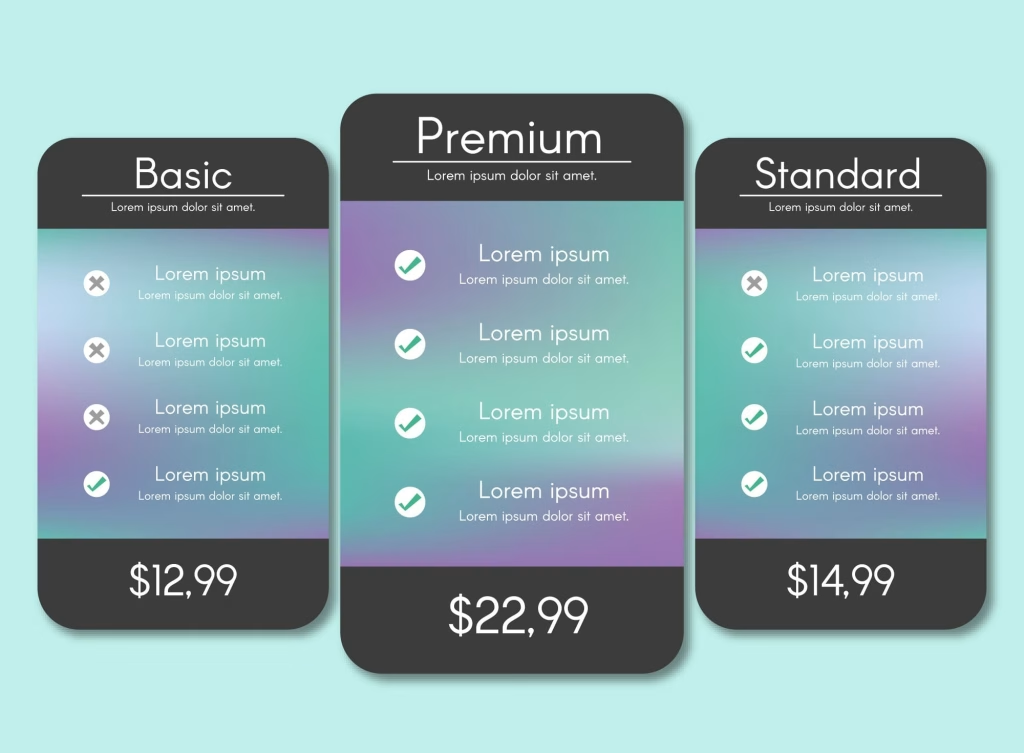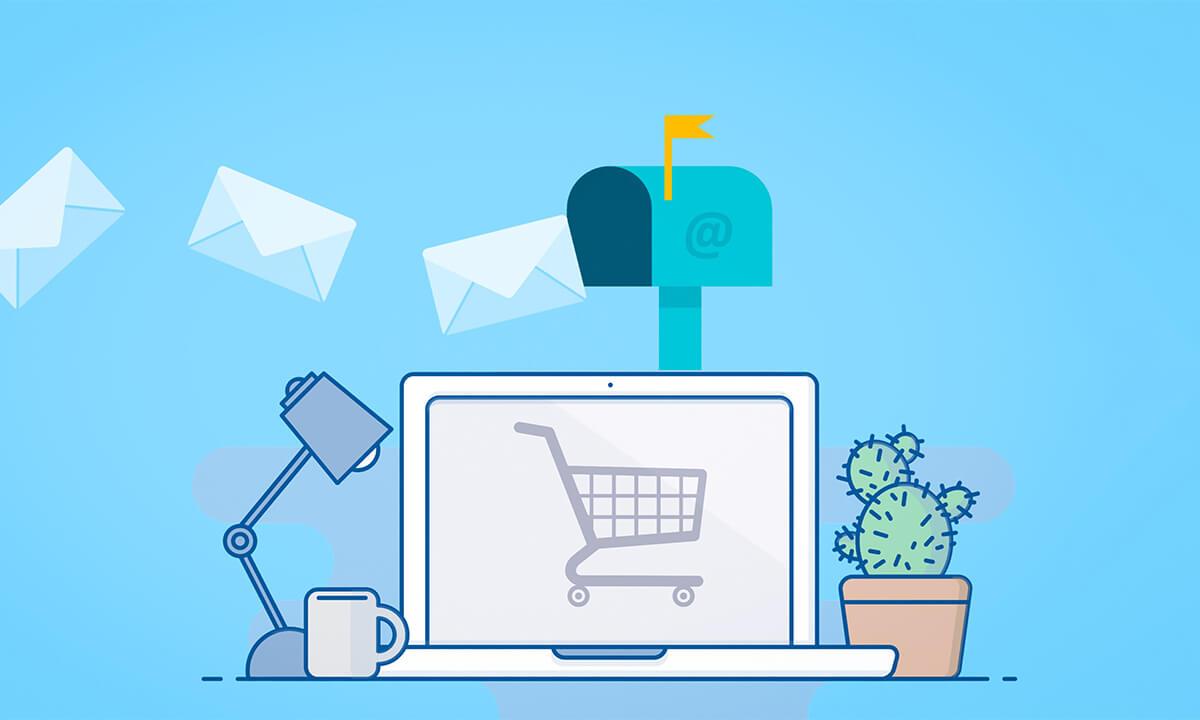Strategic Implementation of Cognitive Biases in Digital Marketing
This comprehensive guide explores the strategic implementation of cognitive biases in digital marketing. It covers how marketers can ethically leverage psychological tendencies across various channels, including SEO, social media, e-commerce, and content marketing.
The article provides practical strategies for applying cognitive biases, measurement techniques, and ethical considerations. It also includes case studies, emerging trends, and future directions in cognitive bias marketing.
In this article:
Introduction
The Importance of Cognitive Biases in Digital Marketing
In the world of digital marketing, understanding human psychology is key to creating strategies that influence consumer decision-making.

Cognitive biases, which are systematic patterns of deviation from norm or rationality in judgement, play a crucial role in shaping how people perceive, interpret, and act on information. By tapping into these biases, digital marketers can optimise their strategies to achieve higher engagement, conversions, and customer retention.
An Overview of Key Cognitive Biases
Some of the most common cognitive biases in marketing include:
- Loss Aversion: The preference for avoiding losses rather than acquiring gains.
- Confirmation Bias: The tendency to favour information that aligns with existing beliefs.
- Familiarity Bias: The preference for things that feel familiar or well-known.
- Bandwagon Effect: The inclination to follow trends simply because others are doing so.
- Scarcity Bias: The perception that something is more valuable when it is scarce or limited.
- Anchoring Bias: The reliance on the first piece of information encountered when making decisions.
Cognitive Bias SEO Tactics
Leveraging Confirmation Bias in Content Creation

Confirmation bias refers to people’s tendency to seek out or favour information that aligns with their pre-existing beliefs. In SEO, understanding this bias can lead to the creation of content that resonates deeply with your target audience.
- Keyword Research: Conduct in-depth research to identify the common beliefs or pain points of your target market. Tailor your content to address these areas.
- Aligned Content Creation: Write articles or create resources that reinforce the ideas or solutions your audience is already inclined to accept. Providing well-researched, factual insights that align with these beliefs increases the likelihood of engagement.
- Compelling Metadata: Craft titles, headers, and meta descriptions that align with your audience’s values and expectations to drive higher click-through rates.
Harnessing Familiarity Bias in Brand Positioning

Familiarity bias leads people to favour things they recognise. In the context of SEO, businesses can capitalise on this bias by making their brand more recognisable and trustworthy.
- Brand-Specific Keywords: Use consistent keywords related to your brand across various platforms to enhance recognition.
- Internal Linking: Build a robust internal linking structure to keep users within your content ecosystem, guiding them towards your desired outcomes.
- Consistent Brand Voice: Develop a distinctive, consistent brand voice that evokes trust and familiarity across all digital touchpoints.
Social Media Marketing
Bandwagon Effect: Building Momentum

The bandwagon effect is a powerful tool for social media marketers. It taps into people’s natural inclination to follow the crowd. On platforms like Instagram, X (formerly Twitter), or Facebook, marketers can use this bias to increase engagement and build community.
- User-Generated Content: Showcase testimonials, reviews, and user posts to demonstrate that others are engaging with your brand.
- Highlight Social Proof: Display milestones like follower counts or engagement metrics to create the impression that your brand is popular and worth joining.
- Branded Hashtags: Encourage followers to participate in conversations around your brand by creating catchy and memorable hashtags.
Scarcity Bias: Creating Urgency

Scarcity bias amplifies the perceived value of limited-time offers or rare opportunities. On social media, this can be effectively utilised to increase urgency and drive sales or conversions.
- Exclusive Offers: Promote special, time-sensitive offers only available to your social media followers.
- Limited Stock: Display messaging around limited availability or stock to encourage quicker decision-making.
- Countdown Timers: Use countdown timers for product releases or promotional events to create a sense of urgency.
E-commerce Optimisation
Anchoring Bias in Pricing Strategies

Anchoring bias occurs when people rely too heavily on the first piece of information they see. In pricing, this can be leveraged by presenting high initial prices that make discounted products seem more attractive.
- Discount Displays: Show the original price alongside the discounted price to highlight savings.
- Tiered Pricing: Offer different pricing tiers, encouraging customers to opt for mid-range or premium products.
- Premium Product Strategy: Introduce high-end products that make other options seem more affordable by comparison.
Loss Aversion in Cart Abandonment Reduction

Loss aversion refers to the tendency to prefer avoiding losses over acquiring gains. This can be effectively used in e-commerce to reduce cart abandonment.
- Exit-Intent Popups: Trigger popups that highlight the benefits customers would lose if they leave their cart.
- Follow-Up Emails: Send reminder emails about abandoned carts, offering incentives to encourage completion.
- Limited-Time Offers: Provide time-sensitive discounts or offers to nudge customers to complete their purchase.
Content Marketing
Availability Heuristic in Storytelling

The availability heuristic refers to the tendency to make judgments based on easily accessible information. Content marketers can use this to influence perceptions by creating content that sticks in the audience’s mind.
- Success Stories: Use vivid case studies and success stories to make your message more relatable and memorable.
- Relatable Anecdotes: Incorporate stories and anecdotes that resonate with your audience’s experiences and beliefs.
- Customer Testimonials: Frequently share testimonials from satisfied customers to reinforce the perceived value of your products or services.
The Framing Effect in Message Presentation

The framing effect shows how the way information is presented influences decisions. By framing your marketing messages in a positive light, you can make them more compelling.
- Positive Framing: Frame your product benefits positively, emphasising what customers will gain.
- A/B Testing: Test different formats and message tones to identify the most effective way to present your product or service.
- Value Emphasis: Focus on the advantages and outcomes of your offering rather than just the features.
Mobile Marketing and Cognitive Biases
App Design Principles Leveraging Cognitive Biases
Mobile apps can benefit from applying cognitive biases to enhance user retention and engagement. Simple, effective design choices can leverage biases like familiarity and loss aversion.
- Consistent Branding: Ensure that the app’s branding remains consistent across all platforms, from icons to colours, to evoke familiarity.
- Exclusive Features: Highlight rewards or features that are only available through the app, tapping into users’ loss aversion.
- Gamification: Integrate progress bars or reward systems that make users feel ownership and drive continued interaction.
Push Notification Strategies to Encourage Engagement
Push notifications are a direct way to engage users and can utilise cognitive biases to improve response rates.
- Scarcity Bias: Send alerts about time-limited offers or events to create urgency.
- Bandwagon Effect: Use language that emphasises the number of people already participating or benefiting from an offer.
- Anchoring Bias: Remind users of previous interactions, such as “Only one step left to complete your profile.”
Email Marketing: Subject Lines and Content Optimisation
Crafting Compelling Subject Lines Using Cognitive Biases
Subject lines are crucial in determining whether your email will be opened or ignored. Cognitive biases can significantly enhance their effectiveness:
- Curiosity Bias: Use intriguing subject lines that spark curiosity. For example, “You won’t believe what we’ve got for you” or “Here’s a secret we’ve been keeping for you”.
- Scarcity Bias: Subject lines that emphasise urgency or exclusivity can boost open rates. Phrases like “Last chance” or “Only a few left!” work by creating a sense of limited availability.
- Social Proof: Subject lines that imply others are engaging with your content or offer can lead to increased interest. For example, “Thousands have already claimed their free trial”.
Structuring Email Content for Maximum Engagement
After the subject line, the content of your email must grab and retain the reader’s attention. The following cognitive biases can be employed to structure your email content effectively:
- Reciprocity Bias: Offer something of value early in the email, such as a free resource, to encourage the recipient to take the desired action later.
- Anchoring Bias: Highlight the value of your main offer by first showing a higher-priced option, making the actual offer seem more attractive.
- Framing Effect: Present your content positively. For instance, rather than saying “You’re losing out on this offer,” frame it as “Claim your benefit today.”
A/B Testing Strategies for Bias-Based Campaigns
A/B testing is vital for refining your email marketing strategy, and understanding cognitive biases can make these tests more effective:
- Test Framing: Experiment with different ways of presenting the same offer—e.g., emphasising gains versus avoiding losses.
- Test Scarcity vs. Abundance: Try testing email content that either emphasises limited availability or focuses on an abundant offer, and see which version gets more engagement.
- Test Subject Line Biases: Craft multiple subject lines based on different cognitive biases, such as curiosity, social proof, or urgency, and test to see which resonates best with your audience.
Personalisation and Cognitive Biases
Combining Data-Driven Personalisation with Psychological Principles
Personalisation is crucial for modern marketing, and when combined with cognitive biases, it can significantly boost engagement. Here’s how:
- Segmentation and Tailored Content: Use data to segment your audience and personalise content based on past interactions or behaviours. For example, if a customer previously bought a specific product, use that data to recommend complementary items.
- Reciprocity Bias: Offering personalised discounts or rewards based on customer behaviour can increase conversions, tapping into the reciprocity principle.
Creating Tailored User Experiences
To create a memorable and persuasive experience for your users, consider these psychological principles:
- Familiarity Bias: Use personalised recommendations that feel familiar to your users based on their previous behaviours, making them more likely to engage.
- Commitment Bias: Encourage small commitments, such as signing up for a newsletter or adding items to a shopping cart, which increases the likelihood of larger commitments down the line.
- Loss Aversion: Offer personalised reminders to customers about the benefits of their actions or purchases, reinforcing the fear of losing out if they do not act.
Ethical Considerations in Personalised Marketing
Personalisation, while highly effective, comes with ethical considerations:
- Transparency: Always be clear about how data is being used and provide easy options for customers to manage their preferences.
- Avoid Over-Personalisation: While personalisation can boost engagement, too much personalisation, such as overly intimate or creepy targeting, can lead to negative user experiences.
- Data Privacy: Ensure your business complies with privacy regulations like GDPR, and never misuse customer data in ways that could harm trust.
Measuring the Impact of Cognitive Bias Strategies
Key Performance Indicators for Bias-Based Campaigns
To assess the effectiveness of your cognitive bias-driven campaigns, consider the following KPIs:
- Open Rate: For email marketing, monitor the open rate to see how compelling your subject lines based on cognitive biases are.
- Click-Through Rate (CTR): A higher CTR indicates that your content is engaging, especially if you’ve used cognitive biases like reciprocity or scarcity to drive action.
- Conversion Rate: Measure how well your campaigns convert readers into customers, which can be improved by using biases like anchoring, loss aversion, or social proof.
- Customer Retention: After a successful campaign, measure whether customers return or engage further with your brand, which can be influenced by familiarity bias or commitment bias.
Tools and Techniques for Tracking Effectiveness
Using the right tools will help you monitor the effectiveness of your cognitive bias-driven strategies:
- Google Analytics: Track user behaviour on your website and see how visitors respond to campaigns that use specific biases.
- A/B Testing Tools: Use platforms like VWO to test different variations of content, subject lines, or offers that leverage biases.
- Email Analytics: Monitor open rates, click-through rates, and conversion rates in email marketing to assess how your cognitive bias strategies are performing.
Iterative Improvement Processes
As with all marketing strategies, it’s crucial to continuously test and refine your approach:
- Iterate on Bias Application: Regularly test new biases, like social proof, scarcity, or framing, and track their performance over time to understand what works best.
- Optimise Based on Data: Continuously monitor results and adjust your content and strategies accordingly, ensuring that you’re maximising the effectiveness of each cognitive bias used.
- Feedback Loops: Gather feedback from your audience and use it to refine future campaigns, ensuring that your approach aligns with customer expectations and desires.
Cross-Cultural Considerations in Cognitive Bias Marketing
Variations in Cognitive Biases Across Different Cultures
While cognitive biases are universally applicable, their impact may vary across different cultural contexts. For example:
- Social Proof: In collectivist cultures, such as those in East Asia, social proof may have a stronger impact, with people more likely to follow the actions of a group.
- Familiarity Bias: In cultures with strong national pride, familiarity with local brands might make customers more loyal than international brands, making localised marketing more effective.
- Framing Effect: In individualistic cultures, messages framed as a personal gain (e.g., “you’ll benefit”) may be more effective than those framed as avoiding loss or helping others.
Adapting Strategies for Global Markets
When expanding into international markets, marketers should:
- Tailor Messaging: Adapt your use of cognitive biases based on cultural preferences and values. For example, scarcity in Western markets might create urgency, while in some Asian cultures, scarcity may have a more powerful psychological pull.
- Localised Content: Ensure that content is relevant to each market by localising language, imagery, and cultural references.
Case Studies of Successful Cross-Cultural Campaigns
- Coca-Cola: Coca-Cola uses culturally sensitive branding and leverages social proof in different markets by highlighting how popular their product is in each region.
- Airbnb: Airbnb has adapted its messaging to resonate with local values, using framing effects and social proof tailored to different cultures, making it relatable and persuasive in various countries.
Ethical Considerations and Best Practices
While cognitive biases can be powerful, marketers must use them ethically to maintain trust and transparency with their audience.
Guidelines for Responsible Use of Cognitive Biases
- Transparency: Always be clear about your marketing tactics and avoid deceptive practices.
- Value-First Approach: Ensure your product or service genuinely benefits the customer.
- Respect User Choice: Allow users to make informed decisions without undue pressure.
- Data Privacy: Handle user data responsibly and in compliance with regulations.
- Cultural Sensitivity: Be aware of how cognitive biases may vary across cultures.
- Avoid Exploitation: Don’t target vulnerable populations or exploit psychological weaknesses.
- Regular Ethical Audits: Conduct periodic reviews of your marketing strategies to ensure ethical compliance.
Emerging Trends and Future Directions in Cognitive Bias Marketing
Digital marketing is continuously evolving, driven by technological advancements and deeper psychological insights. As we look toward the future, emerging trends in cognitive bias marketing promise to revolutionise how businesses understand and engage with their audiences.
These trends blend cutting-edge technologies like artificial intelligence, neuroscience, and immersive experiences with sophisticated psychological principles, offering unprecedented opportunities for personalised and ethical marketing strategies:
- AI-Powered Personalisation: Machine learning algorithms are becoming increasingly sophisticated in predicting and leveraging individual cognitive biases.
- Virtual Reality (VR) and Augmented Reality (AR): These technologies offer new ways to tap into biases like the endowment effect by allowing users to virtually “own” products before purchase.
- Voice Search Optimisation: As voice assistants become more prevalent, marketers will need to adapt their strategies to leverage cognitive biases in spoken interactions.
- Neuroscience-Based Marketing: Advancements in neuroscience are providing deeper insights into cognitive biases, allowing for more precise marketing strategies.
- Ethical AI: The development of AI systems that can identify and mitigate unethical uses of cognitive biases in marketing.
- Cross-Platform Cognitive Mapping: Tools that track user behaviour across multiple platforms to create comprehensive cognitive bias profiles for hyper-personalised marketing.
- Regulatory Developments: Expect increased scrutiny and potential regulation of cognitive bias-based marketing tactics, particularly in areas like data privacy and consumer protection.
Conclusion
Incorporating cognitive biases into digital marketing strategies can significantly enhance user engagement, boost conversions, and build brand loyalty. From SEO and social media marketing to e-commerce and mobile strategies, understanding how to leverage psychological principles ethically is crucial for any marketer seeking to optimise their campaigns. By using cognitive biases responsibly, businesses can foster stronger connections with their audiences, drive measurable results, and create more effective marketing campaigns.

Our dedication to excellence is highlighted by our recognition from Clutch as a Top SEO Company in the UK for 2024.
Agile is an independent Digital Marketing Agency headquartered in London, specialising in web design and search engine optimisation. Our proficiency is underscored by several HubSpot Certifications, and we take pride in being recognised as a 2023 Global Award Winner for SEO by Clutch. At the heart of our success lies a team that seamlessly navigates the intersection of technology and marketing, ensuring innovative and impactful solutions for our clients.
Related
Articles


